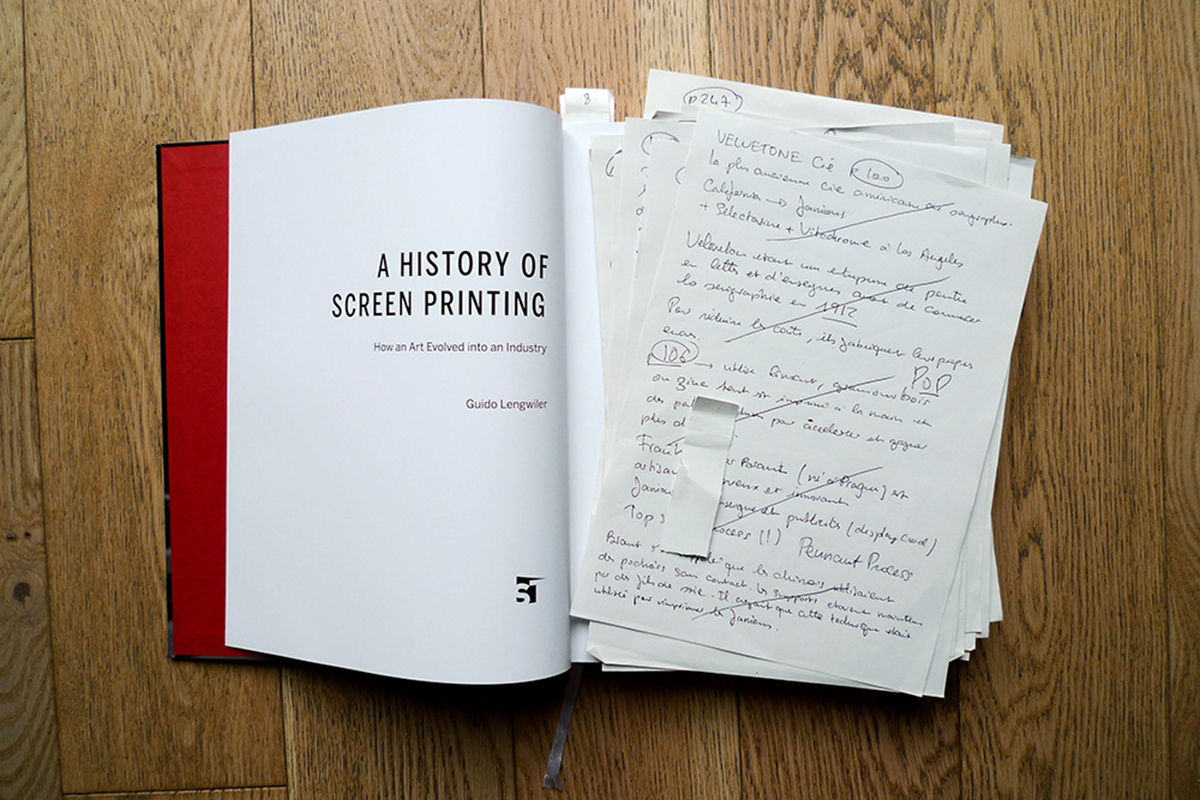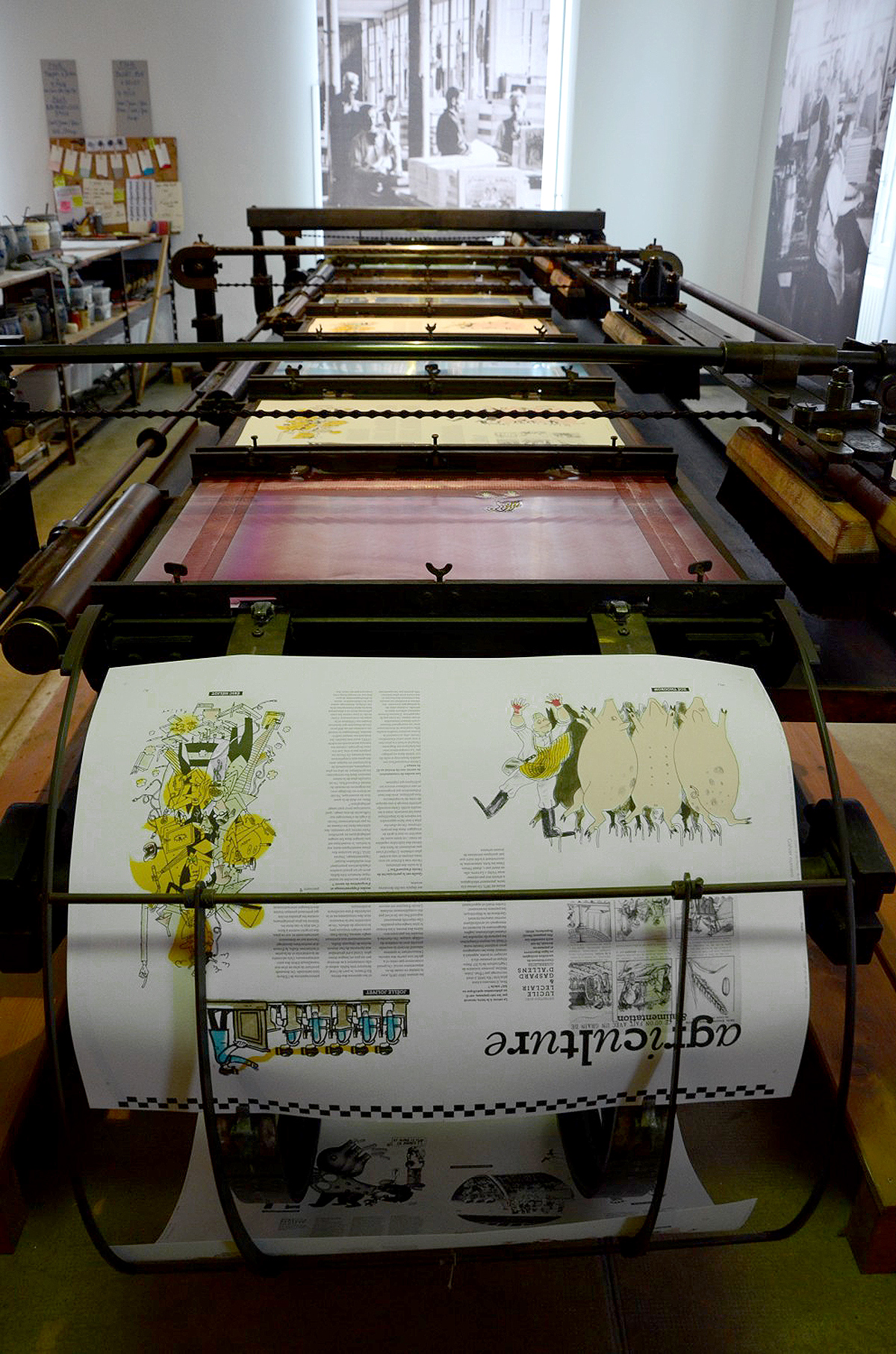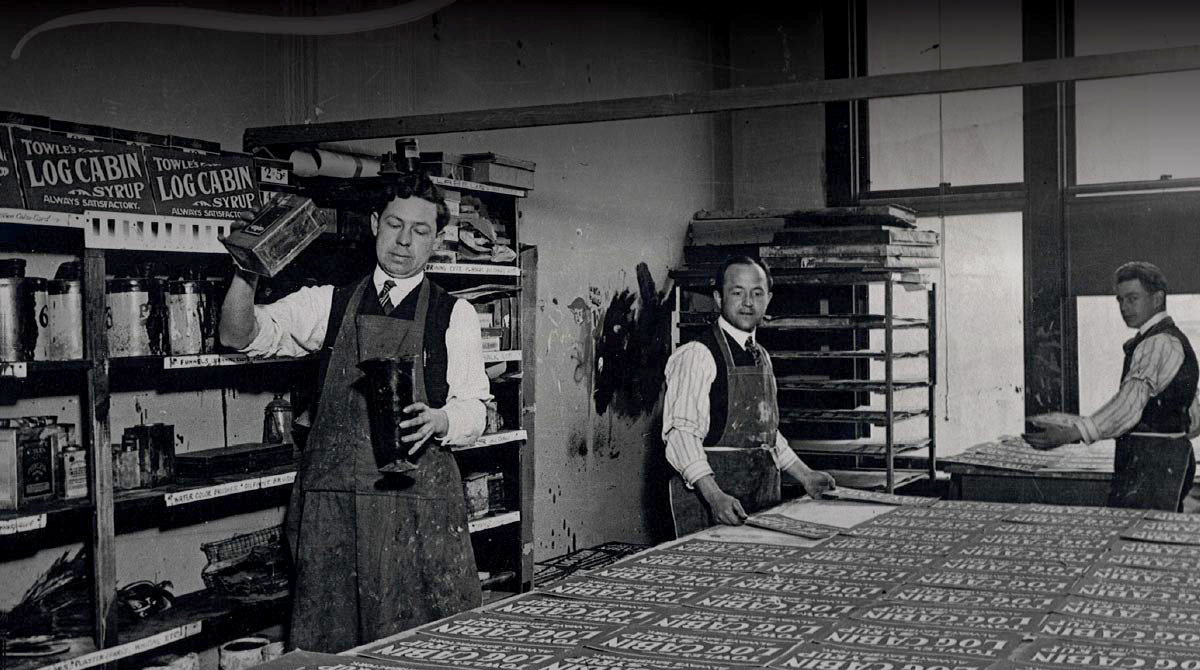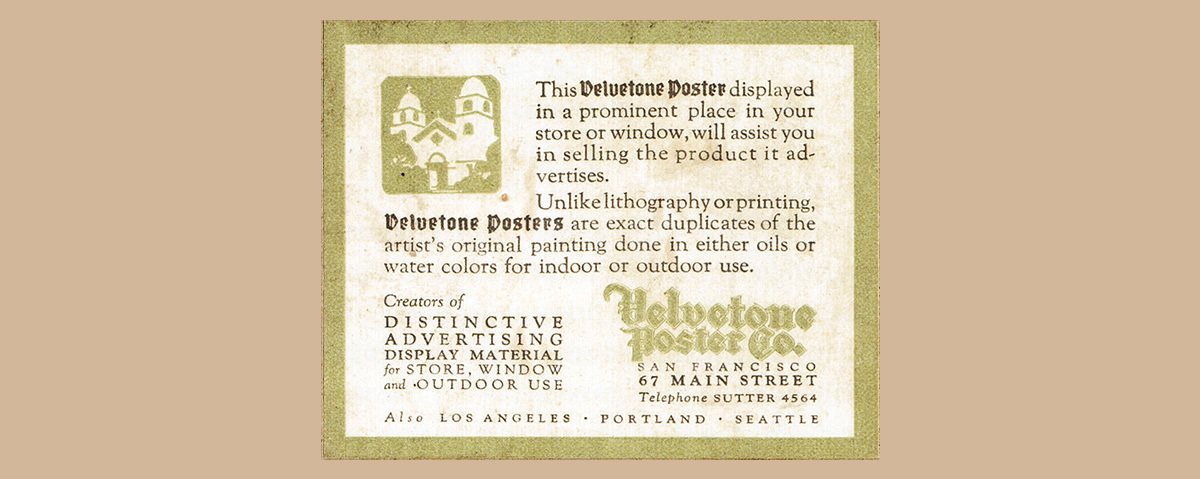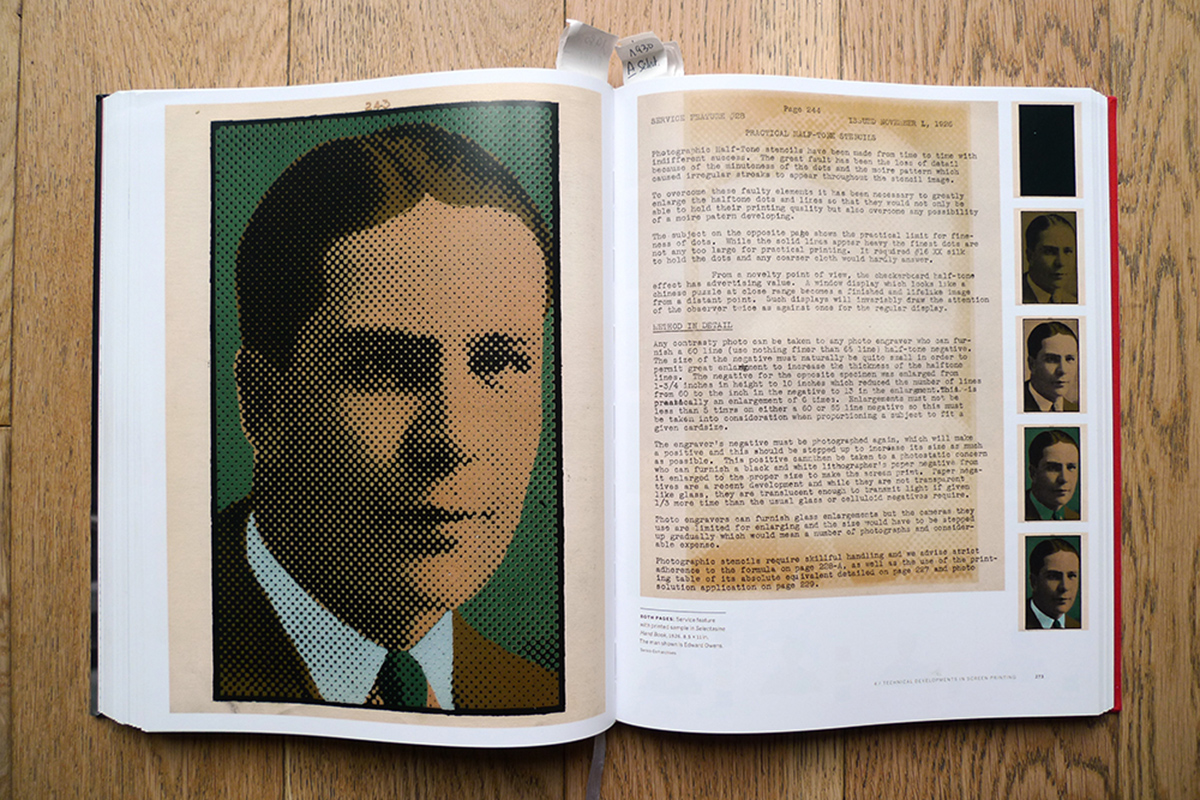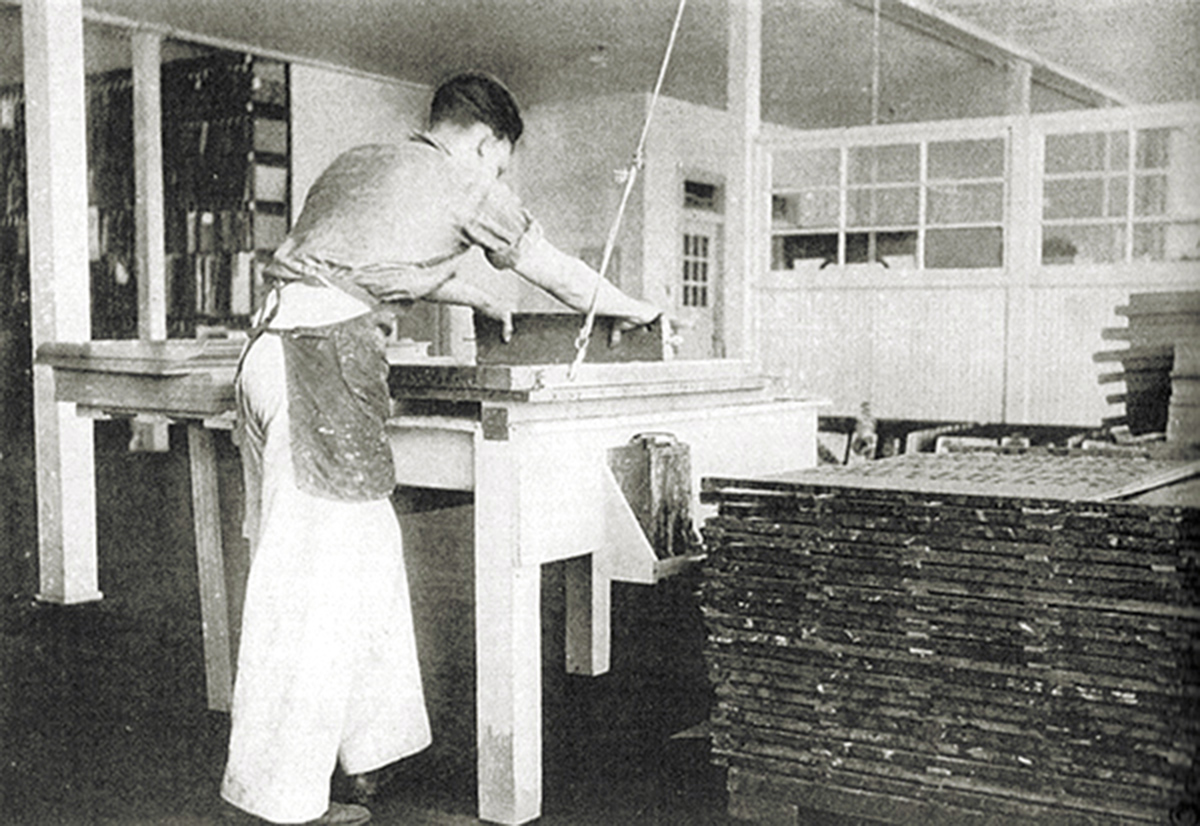The mystery of screen printing—a picture-book version of the past? Yet its origin, the stencil technique, is disarmingly simple: a cut-out design in cardboard, a brush, a bit of ink or paint… and voilà, you’re printing.
While there are many stencil-based printing techniques, they all played a part in the invention of screenprinting. In 1902, for example, the famous Épinal printworks in France was producing nine-color images—first manually, then using removable stencils and automated brushes (The Aquatype machine was a small mechanical marvel). From 1895 through the late 1930s, stencils were even still used in France to hand-color books, magazines, and fashion journals with gouache!
Photos © Musée de l’Image d’Épinal / www.imagerie-epinal.com
The origin of screenprinting remains a mystery. The difficulty in finding period documents is truly surprising. Yet, starting in 1906, several patents were filed for the use of removable stencils and stretched fabric screens. Some, even more rudimentary, date back to 1880! So it’s pointless to search for the first inventor of screenprinting (Jehan Raymond, Samuel Simon, John Pilsworth, Harry Leroy Hiett…). You’ll discover in Guido Lengwiler’ book that they were all pioneers. To convince yourself, biographies and previously unpublished documents are revealed throughout the pages: an incredible documentary effort!
The Brant & Garner workshop in 1913 (San Francisco). This is the oldest known photo showing screen printing in action.
Velvetone: Welcome to the Poster Company
The Velvetone Company is probably the oldest screenprinting company. It’s the first major discovery in the book! Did you know that in 1908, American flag manufacturers were using a completely new printing technique? Felt pennants were extremely popular in America. These commemorative souvenirs could be found at celebrations, elections, in schools, and at baseball stadiums.
In 1910, before founding the Velvetone Poster Company in San Francisco, Franck Ottokar Brant was already a resourceful craftsman when he recalled that the Chinese had been using (since the 14th century) stencils reinforced with silk thread. Brant believed that the creation of pennants was inspired by this ancient technique… But the secret was closely guarded!
Screenprinted felt pennants dated 1909. The small illustrations were hand-colored using an airbrush.
“There were no brushstrokes, and the colors hadn’t been applied using a spray gun. Brant couldn’t stop thinking about it because he saw it as an unknown technique for printing advertisements and posters. He then got hired […] at a pennant factory and was introduced to the stretched silk screens on a wooden frame (the screen), and how they were held in place with a hinge. He used the table, the squeegee, and a thick ink. That was all he needed to know…”
The first attempts were disastrous, but the rapid rise of graphic and advertising screenprinting was about to begin.
Advertisement for Velvetone Poster Company in 1925.
Advertisements in Toronto (USA) in 1920 © City of Toronto Archives.
We Want Pop Art Ads!
“In the USA, people buy because it’s new; in Europe, people don’t buy because it’s new.” This was the blunt summary of a Swiss expert in 1931. What a striking difference in mentality! Classic and austere on the old continent, advertising claims its optimism in America. The ubiquitous street ads were already associating creativity with sophistication.
Although screenprinting processes were described early on through patents in Europe, the key elements of printing on stretched fabric and its commercialization found a more fertile ground across the Atlantic, particularly in California. This marked the beginning of a new graphic art, well before the rise of Art Deco in France (1925).
While brushes, manual stencils, and wood or metal engraving were still in use, Pop (Point of Purchase) ads were about to be revolutionized by the richness of colors and the simplicity of printing with stretched fabric—the ancestor of modern screen printing.
The first large-format billboard was printed by Selectasine in 1916. Just imagine, this billboard, printed in 24 pieces, measured nearly 5 meters by 2.20 meters.
Pop Art in the style of Roy Lichtenstein ahead of its time? No, just an example of a strikingly modern print made by Selectasine using a photographic stencil in 1926.
Selectasine: the rise and fall of an empire
In 1912, sign painters would find in screenprinting a way to earn much more money. A real breakthrough: no more long hours spent drawing and then painting signs. The manufacturing costs made it possible to produce advertisements in very large formats.
Owens, Beck, and Steinman, by founding the Selectasine Company (San Francisco), would give their name to the process that would make them famous. This patent allowed multiple colors to be printed on a single screen. Completely forgotten today, this invention would, however, be used until 1930 and even automated.
Edwards Owen at the helm of the Selectasine Printshop from 1916 to 1918.
In 1927, Edward Owen wrote: “Our offices are overwhelmed by a continuous flow of mail from all over the world.” The expansion and licensing of Selectasine were meteoric. They earned nearly $400,000 in a single year! However, by the 1930s, the Selectasine process faced fierce competition. The first “ready-to-use” film supports made stencil creation easier. Technology evolved so rapidly that printing on a single screen was abandoned in favor of a multi-screen system.
Screenprinted billboard by Selectasine between 1916 and 1918 in 7 colors. It’s worth noting that the lettering was still printed using the traditional stencil method.
Read on, Chapter 2:
A golden age of graphic art
The translated excerpts and photographs from the book are reproduced with the permission of Guido Lengwiler A History of Screen Printing: How an Art Evolved into an Industry
All rights reserved / Photos © 2014 Dezzig


